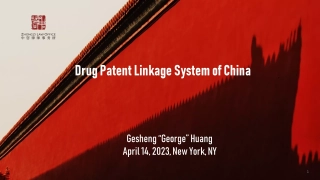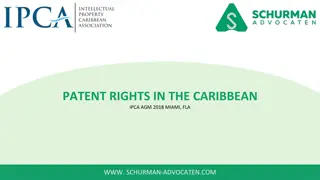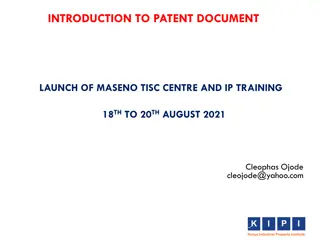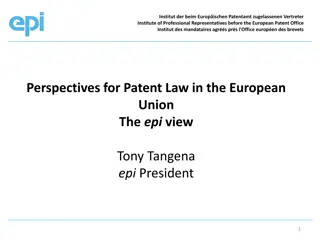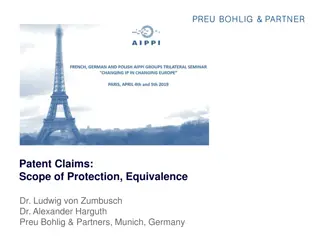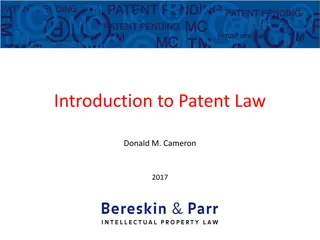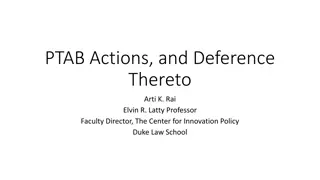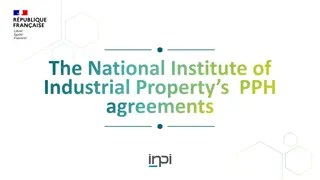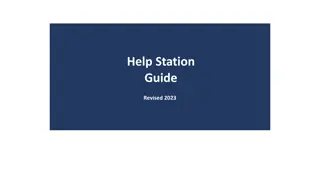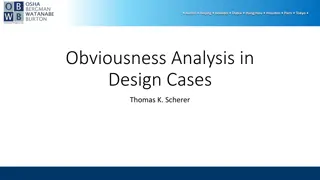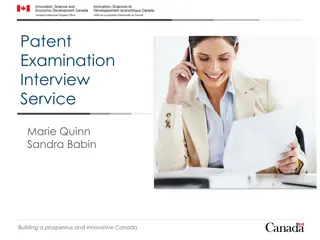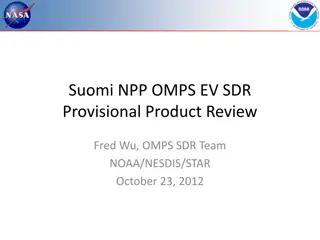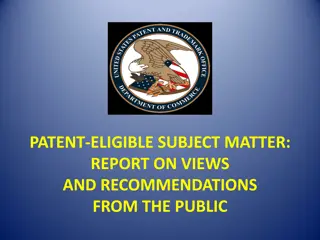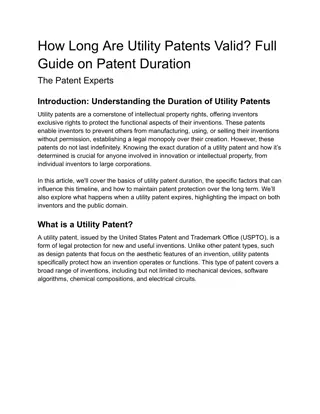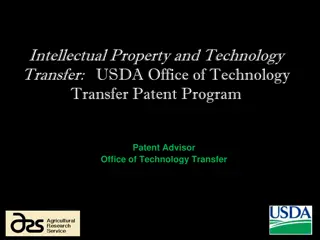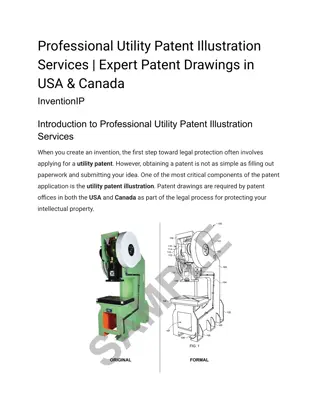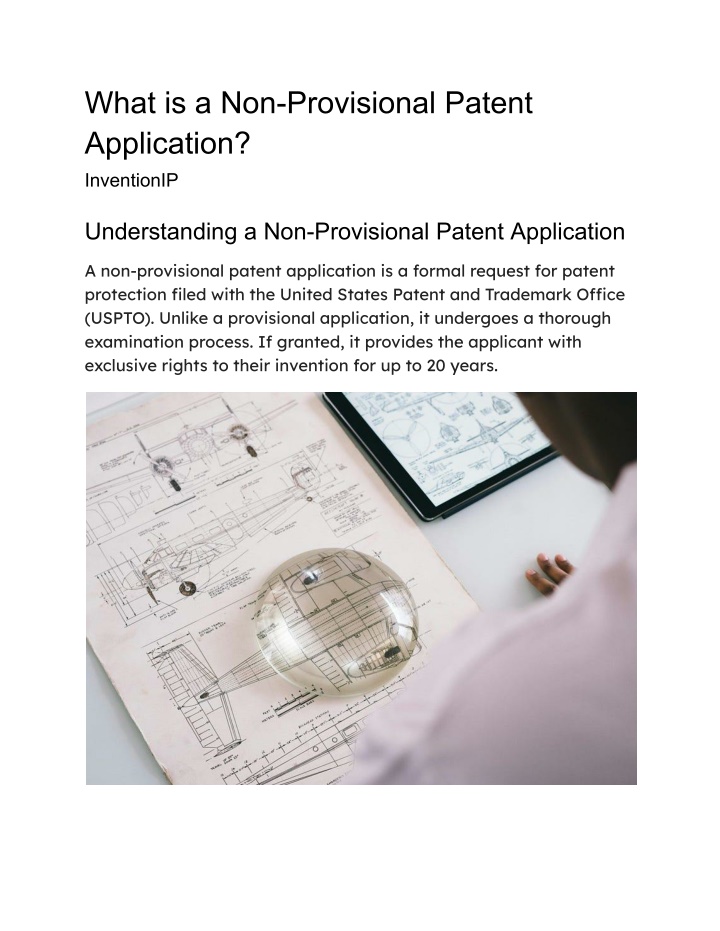
What is a Non-Provisional Patent? A Complete Guide for Inventors | InventionIP
A non-provisional patent application grants long-term protection for your invention, securing exclusive rights for up to 20 years. Unlike a provisional patent, it undergoes a formal USPTO examination, making it legally enforceable. This guide covers
Uploaded on | 1 Views
Download Presentation

Please find below an Image/Link to download the presentation.
The content on the website is provided AS IS for your information and personal use only. It may not be sold, licensed, or shared on other websites without obtaining consent from the author. If you encounter any issues during the download, it is possible that the publisher has removed the file from their server.
You are allowed to download the files provided on this website for personal or commercial use, subject to the condition that they are used lawfully. All files are the property of their respective owners.
The content on the website is provided AS IS for your information and personal use only. It may not be sold, licensed, or shared on other websites without obtaining consent from the author.
E N D
Presentation Transcript
What is a Non-Provisional Patent Application? InventionIP Understanding a Non-Provisional Patent Application A non-provisional patent application is a formal request for patent protection filed with the United States Patent and Trademark O?ce (USPTO). Unlike a provisional application, it undergoes a thorough examination process. If granted, it provides the applicant with exclusive rights to their invention for up to 20 years.
Patent protection is crucial for inventors and businesses that want to safeguard their intellectual property and prevent unauthorized use or duplication of their innovations. By filing a non-provisional patent application, inventors gain the ability to commercialize their ideas and benefit from their hard work. Key Differences Between Provisional and Non-Provisional Patents When deciding between a provisional and non-provisional patent application, it is important to understand their differences: Legal Protection A non-provisional patent grants enforceable rights, while a provisional patent only serves as a placeholder. Examination Process The USPTO reviews non-provisional applications to determine patentability. Filing Requirements A non-provisional patent must include a detailed specification, claims, and formal drawings. Patent Term The 20-year protection period starts from the non-provisional filing date. Conversion Possibility A provisional patent can be converted into a non-provisional patent within 12 months, allowing inventors to delay the costly and time-consuming formal examination process.
Why File a Non-Provisional Patent Application? Filing a non-provisional patent application is crucial for securing long-term protection for an invention. It legally establishes ownership and prevents others from making, using, or selling the invention without permission. This step is essential for businesses and inventors seeking to commercialize their innovations and maintain a competitive edge in their industries. A non-provisional patent also provides stronger protection in court should any disputes arise regarding intellectual property rights. Since the application undergoes a thorough examination by the USPTO, it holds significant legal weight in patent infringement cases. Steps to File a Non-Provisional Patent Application 1. Conduct a Patent Search Before filing, a patent search ensures the invention is unique. This step prevents unnecessary rejection and legal conflicts. By conducting a thorough search, inventors can assess whether their idea is novel or if similar patents already exist. Many inventors hire patent attorneys or use the USPTO online search tools to navigate this process effectively. 2. Prepare a Detailed Specification The application must contain a full description of the invention, including: Title Background information Summary of the invention
Detailed description with drawings Claims defining the invention s scope The specification should be clear and precise, outlining how the invention works and how it differs from existing technology. A well-written specification strengthens the application and reduces the likelihood of rejection. 3. Include Formal Drawings Patent drawings provide a visual representation of the invention. These must meet the USPTO s formatting requirements. Drawings are essential when describing mechanical or technical components, as they help examiners and potential investors understand the design and functionality of the invention. 4. Draft Clear and Concise Claims Claims define the invention s legal boundaries. Well-written claims strengthen patent protection and prevent loopholes. Claims should be specific and clearly outline the aspects of the invention that are unique. Strong claims can deter competitors from designing around the patent. 5. Submit the Application to the USPTO The application must be filed electronically via the USPTO s online system. The filing fee varies based on the applicant s entity status (individual, small business, or large corporation). It is crucial to ensure all necessary documents are submitted correctly, as incomplete applications can cause delays. 6. Undergo the Examination Process After submission, a patent examiner reviews the application. They may request clarifications or modifications before granting the
patent. This stage involves back-and-forth communication between the applicant and the USPTO. If an application is rejected, the applicant has the option to appeal or amend the claims. Common Reasons for Patent Rejections Understanding why patents are rejected can help applicants refine their submissions and improve their chances of approval. Some common reasons include: Lack of Novelty If the invention is similar to existing patents, it may be denied. Obviousness If an invention is an obvious improvement, it may not qualify for a patent. Incomplete Claims Vague or overly broad claims can lead to rejection. Improper Formatting Non-compliance with USPTO requirements can delay approval. Insufficient Disclosure If the invention is not fully described, the application may be deemed incomplete. Tips to Strengthen a Non-Provisional Patent Application Consult a Patent Attorney Legal experts can help draft strong claims and ensure compliance with USPTO guidelines. Use Professional Patent Drawings High-quality illustrations enhance understanding and strengthen the application.
Provide clear and detailed descriptions The more detailed the specification, the better the chances of approval. Anticipate Examiner Questions Address potential objections in the initial filing to minimize delays. Consider Filing International Patents If planning to market the invention globally, filing in multiple countries may be beneficial. Benefits of a Non-Provisional Patent Securing a non-provisional patent offers multiple advantages: Exclusive Rights The inventor gains full legal control over the invention. Increased Market Value Patents enhance the commercial value of a product. Competitive Advantage Prevents competitors from copying or profiting from the invention. Licensing Opportunities Patent owners can license their inventions for financial gain. Legal Protection Patents help in protecting against intellectual property theft and unauthorized use. Conclusion A non-provisional patent application is a vital step for inventors seeking long-term protection. It requires careful preparation, precise documentation, and legal expertise. Filing correctly can secure exclusive rights and open doors for commercialization. If you have
an innovative idea, consider consulting a patent attorney for expert guidance. By obtaining a non-provisional patent, inventors can transform their ideas into tangible business opportunities, attract investors, and establish themselves as industry leaders. While the process can be complex, the long-term benefits of securing a patent far outweigh the initial challenges. If you are serious about protecting your invention, taking the time to properly file a non-provisional patent application is a crucial investment in your future success. Need Help Drafting Your Non-Provisional Patent? Navigating the patent process can be challenging, but you don t have to do it alone. Get professional assistance with drafting your non-provisional patent application by visiting Invention IP. Protect your invention today!

